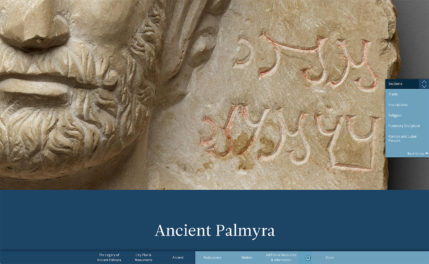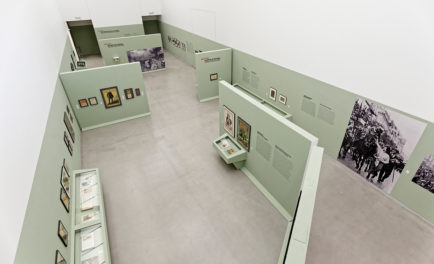
Adorée au grand air (collage on sandpaper), César Moro, 1935. The Getty Research Institute, 980029 © Andre Coyne
Digging for fire at the Getty Research Institute’s recent symposium Vivísimo Muerto: Debates on Surrealism in Latin America, I recalled Guillaume Apollinaire’s thoughts on what I believe to be the essence of Surrealism: “When man wanted to make a machine that would walk he created the wheel, which does not resemble a leg.” Similarly, the research I encountered in the symposium did not resemble my preconceived notions about the Surrealist movement in Latin America.
Far from being a brief and dead part of history, Latin American Surrealism is el gran vívisimo muerto—an entity disguised as a specter, but very much alive. Considering Surrealism’s nomadic spirit, I’m glad it has made a long-term pit stop at the GRI. Through two days of presentations and discussion on the GRI’s extensive collection of primary source materials on Latin American Surrealism, I discovered new artists and stories and got new insights into ones I already knew.
I discovered Peruvian-born gay Surrealist poet-artist César Moro, who considered himself a citizen of the world, who wrote exclusively in French to defy his Latin American contemporaries, and whose admirable adherence to the Surrealist lifestyle may have led to his relative obscurity. Moro organized the first Surrealist exhibition in Latin America in Peru in 1935, and in 1940 staged the first international Surrealist show in Latin America, in Mexico City.

Por Primera Vez, César Moro, 1935. The Getty Research Institute, 980029 © Andre Coyne
I fell in love with the work of Brazilian artist María Martins, whose exotic, erotic, and Afro-indigenous-influenced sculptures served as a discreet attack on the Brazilian establishment—an establishment that her husband, as the Brazilian ambassador in New York, represented.
I learned that André Breton‘s 1945 speech in Haiti (organized in part by Cuban quasi-Surrealist Wilfredo Lam) and the Haitians’ embrace of the anti-fascist nature of Surrealism were catalysts for the revolutionary coup of 1946.
I enjoyed hearing about the research on the rich intellectual exchange among Surrealist artists and writers across the Americas and Europe. Wolfgang Paalen’s Dyn magazine, published in Mexico, provided plenty of intellectual fuel for the entire Surrealist movement, such as its thought-provoking analysis of Surrealist traits in Amerindian art. Magazines outside of Latin America, such as the New York-based VVV, endorsed by André Breton, featured Latin American Surrealists prominently. Interestingly enough, VVV and Dyn were at odds: André Breton held fast to his Surrealist Manifesto, while Wolfgang Paalen strove to move Surrealism beyond metaphysics and mysticism and into an embrace with the sciences.

Terri Geis, research assistant at LACMA, at the podium. Images shown: Cover of VVV magazine, Issue No. 4, March 1943 (left); goddess sculpture by María Martins featured in the magazine (right)
Surrealism traced many different paths in Latin America, exemplified by the diversity of the Surrealist aesthetic in Argentina in magazines such as BOA and the richness of Chilean poetry and photography. Because there were such diverse Surrealist perspectives, however, debates among the Surrealists continued for decades—well into the 1960s, in fact. Argentine surrealist Julio Cortázar’s groundbreaking 1963 novel Hopscotch, for example, stirred intellectual dialogue by simultaneously challenging the traditional idea of the book and presenting his “chemical theory of thought” as a replacement for psychology-laden Surrealism. Debates such as this could, and did, go on and on: Latin American Surrealists, like other Surrealists, did not shy away from contradictions and conflict.
Symposium participants, thankfully, did not get bogged down in old debates. We quickly moved beyond the question, “what is Surrealism?” to delve into what the GRI’s collection has to offer: more than enough fire and life to fuel a two-day symposium, upcoming publications, and (I can’t wait) a proposed exhibition.




Great article in the L.A. Times today, mentions the GRI’s research of Latin American Surrealism: http://www.latimes.com/entertainment/news/la-et-gaehtgens-getty-20100804,0,1117690.story